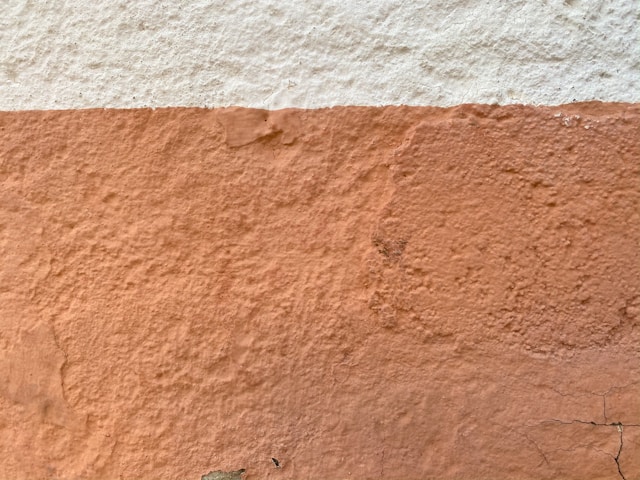5 Common Stucco Repair Mistakes DIYers Make — and How We Do It Right
Stucco: a classic choice for exteriors, but keeping it beautiful takes know-how. This blog is your guide to maintaining, repairing, and loving your stucco home!
Stucco remains one of Florida’s favorite exterior finishes thanks to its durability, aesthetic flexibility, and resistance to pests and fire. But just like any building material, stucco can suffer wear and tear over time. Cracks, spalling, delamination, moisture intrusion, and discoloration are frequent issues homeowners face.

Many homeowners attempt DIY stucco repair to save costs. The problem? A small repair done incorrectly may lead to bigger failures, hidden moisture problems, and eventually full-scale rework. At Patriot Stucco Repair, we’ve seen countless examples of well-meaning DIY fixes failing prematurely. In this article, we’ll walk you through 5 common mistakes DIYers often make when repairing stucco — and how our pros approach the same job to ensure long-lasting, beautiful results.
Mistake #1: Skipping a Thorough Inspection for Underlying Damage
Why many DIYers skip it
Homeowners often assume that cracks or visible stucco damage are only superficial. They begin patching right away—without examining what’s behind the surface.
The risk
What looks like a simple crack may hide wood or sheathing damage, rot, mold, or failing flashing. If you patch over hidden moisture intrusion, the repair will fail repeatedly.
How we do it right
- We begin every job with a diagnostic inspection: probe areas around the damage using moisture meters, inspect behind the stucco when feasible, check flashing, weep screed, and underlying lath.
- We identify weak or saturated substrates first, and only begin patching once the wall’s core is sound.
- If substrate damage exists, we repair or replace it before applying stucco again.
Mistake #2: Using the Wrong Stucco Mix or Material
Why many DIYers go wrong
There are different types of stucco systems (traditional cement-based, synthetic/EIFS, acrylic-modified, etc.). Using the incorrect mix or proportions leads to poor adhesion, cracking, or delamination.
Some DIYers buy “one-size-fits-all” patch compounds, unaware that the original stucco may have a custom or modified recipe.
The risk
A mismatched mix often fails to bond properly to the existing stucco. It may shrink, expand differently, crack, or detach. Color blending becomes harder, too.
How we do it right
- We sample the existing stucco (texture, hardness, composition) before repair.
- We choose or blend a compatible repair mix (cementitious, polymer-modified, or custom) to match performance and flexibility.
- We adjust water-to-material ratios, additives, and bonding agents to create a compatible, durable bond.
Mistake #3: Poor Surface Preparation and Weak Bonding
Why many DIYers neglect it
After removing loose stucco, some DIYers jump straight to applying patching material without cleaning thoroughly, removing deeper weak areas, or applying a bonding agent.
They may leave dust, contaminants, or residual loose material in place.
The risk
New stucco that’s applied to a weak or dirty surface will struggle to bond. Over time, it can peel, crack, or detach from the existing surface, especially under Florida’s heat, humidity, and rain cycles.
How we do it right
- We chip out all loose or delaminated stucco and extend the repair zone slightly into good material.
- We clean the substrate thoroughly (wire brushes, pressure wash, or soft wash depending on the situation), then let it dry fully.
- We often apply a bonding agent or primer to the prepared surface so the new stucco bonds strongly.
- For larger repairs, we install or re-secure metal lath (wire mesh) to provide reinforcement.
Mistake #4: Rushing the Application and Curing Process
Why many DIYers rush
Time, weather, or impatience prompt DIYers to skip ideal conditions, accelerate layers, or skip misting/curing steps.
They may try to apply thick layers quickly, skip scratch or brown coat layering, or ignore humidity and temperature constraints.
The risk
Improper cure causes cracks, delamination, shrinkage, and weak bonds. Layers may separate over time. Especially in Florida’s climate, drying too fast or unevenly leads to surface defects or internal stresses.
How we do it right
- We plan work in favorable weather windows (mild temperature, low wind, avoid rain).
- We apply stucco in multiple thin coats (scratch coat, brown coat, finish coat) rather than one thick layer.
- Between coats, we wait for proper curing time (24–48 hours for scratch coat, 7–10 days or more for brown coat depending on conditions) before applying the next.
- We mist newly applied surfaces lightly to keep them from drying too quickly, preserving hydration and avoiding surface cracks.
- We protect patches from direct sun, wind, or rain during curing (use shading, protective sheeting, or moisture tents).
Mistake #5: Overlooking Texture Matching, Seam Blending & Final Sealing
Why many DIYers underinvest here
After the patch cures, many DIY repairs stick out visually. The patch texture, color, and seam edges may be obvious, damaging curb appeal. Also, some skip sealing or painting altogether.
The risk
A mismatched patch may visually dominate the wall, making the repair obvious. Without proper sealing, moisture can re-enter the patch or backer layers, initiating new damage.
How we do it right
- We carefully profile a small test patch to match the texture (spray, dash, sand, skip trowel techniques) before full application.
- We feather edges and blend transitions so the patch gradients into the original stucco, hiding seams.
- Once fully cured, we apply an appropriate sealer or primer‑coat (breathable, stucco-compatible) and then paint or tint to match the rest of the wall.
- We account for faded original surfaces and may suggest refinishing larger wall sections to ensure harmony.
Comparative Overview: DIY vs. Professional Approach
To highlight the differences more clearly, here is a table comparing common DIY mistakes vs. how Patriot Stucco Repair handles each step:
| Phase / Aspect | DIY Approach (Mistakes) | Patriot Stucco Repair Approach |
|---|---|---|
| Initial Inspection | Often skipped or superficial | Detailed diagnostic inspection (moisture meter, substrate exam) |
| Material Selection | Uses generic patch mixes, mismatched formula | Custom mix selection matching stucco type and substrate |
| Surface Prep & Bonding | Incomplete cleaning, no bonding agent, weak prep | Fully remove loose material, clean, apply bonding agent, reinforce with lath |
| Layering & Curing | Thick single applications, insufficient curing, no misting | Multi-coat system (scratch, brown, finish), strict curing times, controlled moisture |
| Texture & Finishing | Visible seams, mismatched color, no seal | Test texture patches, blend edges, apply sealer and color matching final finish |
Why Even a Slight Mistake Can Lead to Failure in Florida’s Climate
Florida’s environment accelerates the consequences of flawed stucco repairs. Humidity, heavy rainfall, salt air (in coastal zones), intense sun, and frequent temperature changes stress exterior finishes.
Even a crack the width of a hair can allow moisture ingress, which expands with heat, freezes in rare frost events, or fosters mold growth behind walls. Over time, that hidden moisture can degrade framing, insulation, sheathing, and interior walls.
Because of this, the margin for error is small. What seems aesthetic or minor typically involves more structural nuance. That’s why a professional approach matters.
Real-World Example: Small Crack Gone Bad
Here’s a real scenario we encountered:
A homeowner in Sarasota attempted to patch a vertical hairline crack near a window using premixed stucco patch without inspecting the substrate. The patch initially looked acceptable, though slightly lighter. Six months later, during Florida’s rainy season, the crack reopened, moisture penetrated behind, and nearby wood trim began to rot.
When Patriot Stucco Repair was called in, we excavated beyond the visibly cracked zone, found deteriorated flashing and water infiltration behind the stucco, replaced the damaged wood and flashing, reinstalled the lath, and applied a three‑coat repair with proper curing and sealing. The patch has held strong for years since.
The cost of the redo was far higher than doing it right the first time.
Tips for Homeowners Before Attempting DIY Repair
- Only attempt repairs when damage is small (hairline cracks, isolated spalling) and the substrate seems intact.
- Always inspect for moisture and structural damage first.
- Start with a test patch in an inconspicuous section to experiment with mix, texture, and curing.
- Work in mild weather—not in extreme heat, direct sun, heavy humidity, or rainy conditions.
- Don’t rush curing; give adequate time between coats.
- Accept that perfect color match is difficult—paint entire walls or larger areas if needed.
- Document your steps, so if you call a pro later, they can see what was done.
When to Call Patriot Stucco Repair
Some situations go beyond DIY:
- Cracks wider than ¼ inch, or multiple cracks
- Signs of moisture intrusion, discoloration, staining, peeling
- Soft or spongy substrate behind stucco
- Delamination or bulging areas
- Repairs near flashing, windows, or roof penetrations
- Texture or color that’s hard to match reliably
- Higher-level wall sections requiring scaffolding or safety considerations
If you encounter any of the above, call Patriot Stucco Repair in Sarasota, FL at 610‑590‑9285. Our experienced team handles everything from diagnostic inspection to complete, long-lasting repairs with a focus on avoiding the mistakes described above.
Final Thoughts
Stucco repair is deceptively tricky. The difference between a repair that lasts and one that fails is often in the details: inspection, matching materials, surface prep, proper layering and curing, texture blending, and sealing.
DIY repairs are tempting, especially to save cost. But the mistakes described above are common, and in Florida’s climate, a small misstep can quickly magnify into bigger failures that compromise both appearance and structure.
At Patriot Stucco Repair, we do each job with the discipline that avoids those errors. Our methodical process ensures repairs that look seamless, perform reliably, and protect your investment for years to come.
Call to speak with one of our professional stucco contractors | 610-590-9285
Patriot Stucco Repair
We can help you repair and remodel your home exterior! Call us today and learn how Patriot Stucco Repair can help.
The region's leading professional stucco contractor
Proudly powered by Snapps website builder



